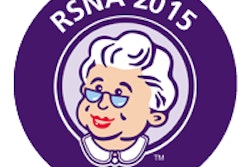
Use of advanced diagnostic imaging fell in 2009, but it rebounded in most modalities in the two years that followed, according to a new analysis of privately insured patients that was published online in the Journal of the American College of Radiology.
Experts say that advanced diagnostic imaging has been a big driver of Medicare spending over the past 20 years, with utilization rates showing levels of financially unsustainable growth. But what about use and payment trends in the privately insured population? Researchers from Boston University decided to investigate this question.
 Michal Horný from Boston University.
Michal Horný from Boston University.
Despite the attention paid to Medicare spending, privately insured patients make up about 55% of the U.S. population -- and as the Affordable Care Act continues to be implemented, that figure will increase, wrote lead author Michal Horný, from the School of Public Health, and colleagues.
"There have been many studies of trends in CT and MRI use in Medicare, and we wondered if the same trends existed in privately insured populations as well," Horný told AuntMinnie.com.
Horný's team investigated utilization trends and per-procedure payment rates for four medical imaging modalities -- CT, MRI, PET, and ultrasound -- between 2007 and 2011 among privately insured patients. They used data from Truven Health Analytics' MarketScan Commercial Claims and Encounters database, which includes more than 29 million individuals. Payment figures included both professional and technical components (JACR, May 7, 2014).
For outpatient imaging, utilization rates increased for all four modalities between 2007 and 2009, the researchers found.
| Utilization growth by modality, 2007 vs. 2009 | ||
| Modality | 2007 | 2009 |
| CT | 100% | 106% |
| MRI | 100% | 105% |
| PET | 100% | 111% |
| Ultrasound | 100% | 113% |
However, rates of diagnostic imaging use dropped between 2009 and 2010, with use of CT and MRI dropping below 2007 levels.
With respect to average payment per procedure, adjusted payments increased between 2007 and 2009, Horný and colleagues wrote. But as with utilization, payments for all four modalities in aggregate decreased from 2009 to 2010, although they did not drop below the 2007 baselines.
"Some studies suggest that advanced imaging growth slowed after the Deficit Reduction Act was enacted in 2007," Horný told AuntMinnie.com. "But these decreases between 2009 and 2010 could have been due as well to the U.S. financial crisis of 2008."
In 2011, outpatient use rates of CT, MR, and ultrasound increased again (PET use decreased slightly), and average payments per procedure rose for all four modalities, according to the group. For CT in particular, Horný and colleagues suggested that the boost in payments was due to the introduction of new CPT codes for combined abdomen and pelvis exams.
"After the codes were bundled together, the combined CT scans of both abdomen and pelvis comprised about 33% of all performed CT scans," the group wrote.
| Growth in per-procedure payment rates by modality, 2007 vs. 2011 | ||
| Modality | 2007 | 2011 |
| CT | 100% | 117% |
| MRI | 100% | 113% |
| PET | 100% | 119% |
| Ultrasound | 100% | 129% |
The fact that utilization and payment rates once again began to increase in 2011 raises an important question about private insurers' ability to address future healthcare growth appropriately, according to the researchers.
"This is especially worrisome as millions of previously uninsured Americans become enrolled in commercial insurance plans available through federal and state health insurance exchanges and Medicaid expansions now being created and implemented under the Affordable Care Act," they concluded. "Markets with substantial commercial insurance expansions may be likely to fuel provider use of imaging procedures with concomitant increases in spending."




















